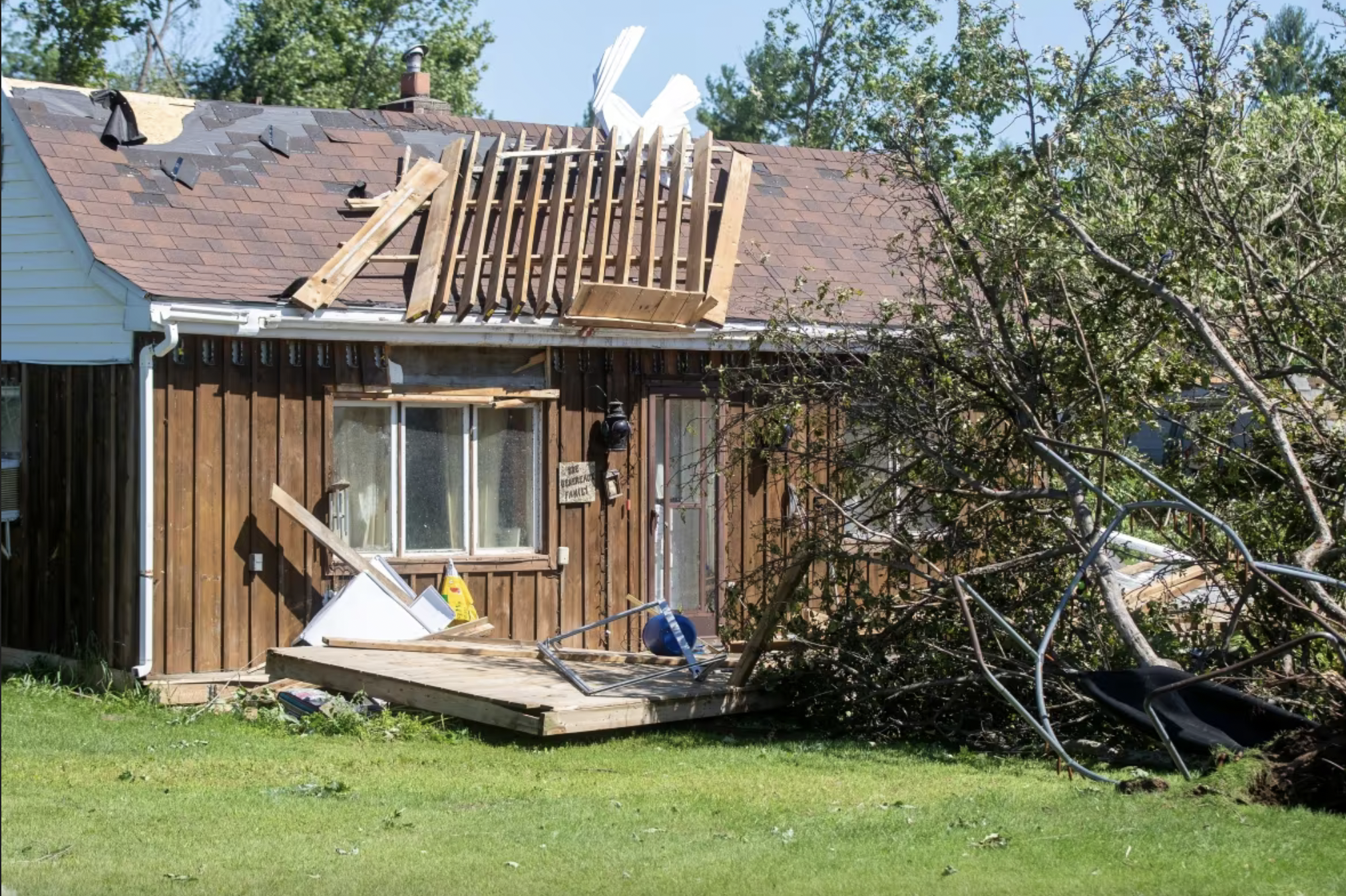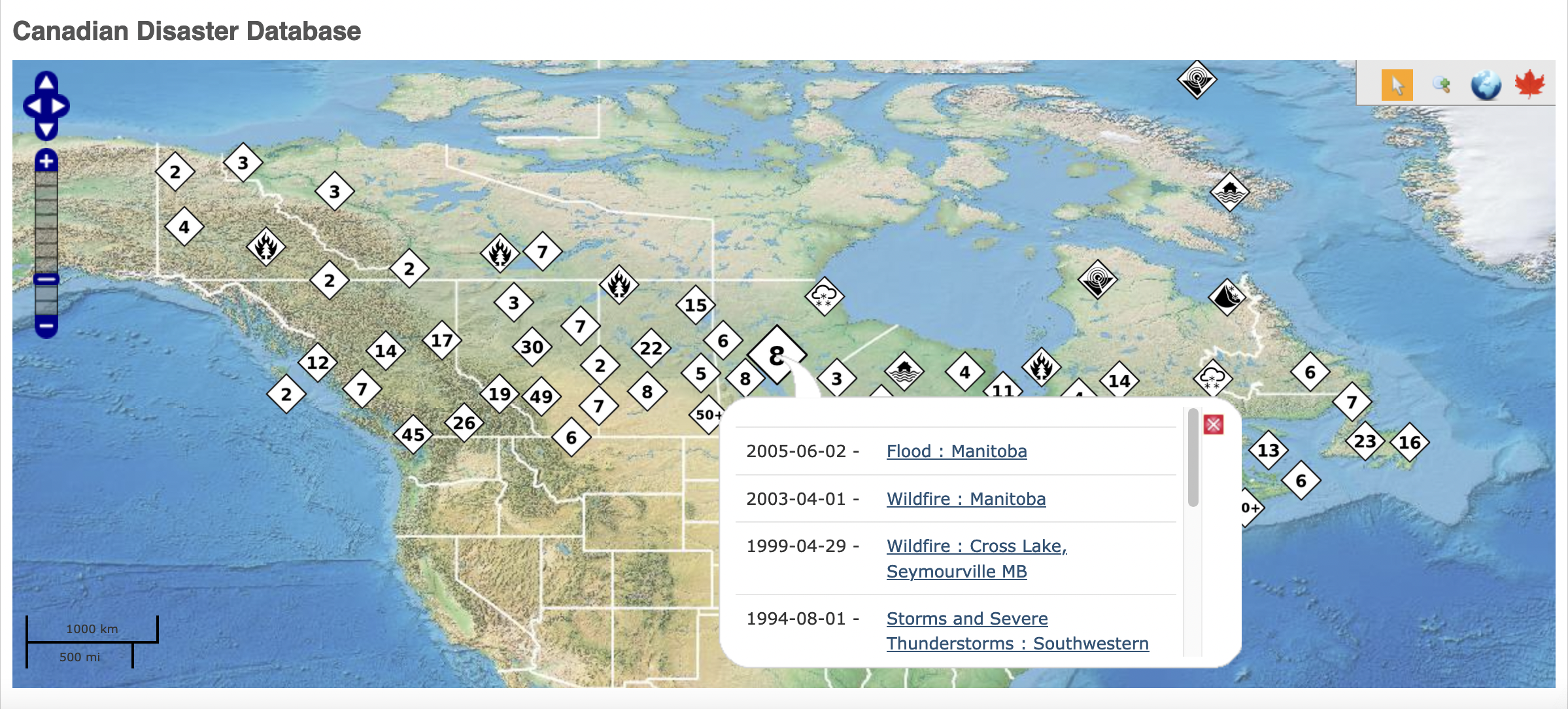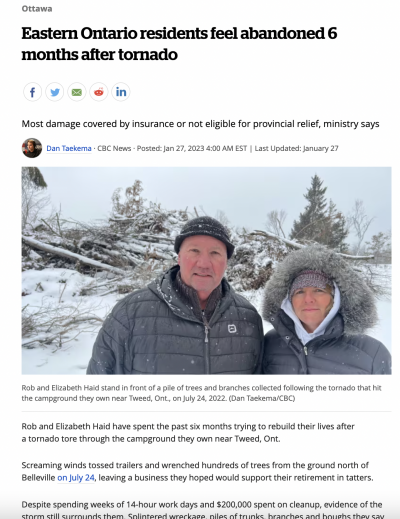On Classroom Experiences

One of the really great things about being awarded funding by the Early Researcher Award program is that youth outreach is built into the granting parameters. Public outreach can’t be an afterthought or something that is tagged on, it has to be part of the work of the project.
For the Disaster Lab, this is an important requirement because too often our research can get away from us (ask me how many hours I spent tracking down the average weather conditions in Montreal in 1851 this morning!) and we can forget about the audiences of our work. Yet audiences, partners and collaborators can and should shape the directions of a project in critical ways.
I was reminded of this recently when I spent an afternoon introducing two Grade 9 Geography classes at Gloucester High School in Orleans, Ontario to the work of the Disaster Lab. I had been in touch with their teacher Jacqueline Jolliffe about the possibility of integrating the work of the project into some of her classroom activities in order to enhance the required provincial curriculum. It took us a while to sort out the logistics, but I was eventually able to appear in person at the end of December. Jacqueline had reached out in an email and said: “…we just started our Demography unit yesterday, and my students were talking about how disasters are a push factor- they are grade nine, and over half were born outside of Canada and they have a lot to say…they have STORIES to share.”
She asked me if I might be able to come to class and I jumped at the opportunity, building on the workshops that we had designed the previous year to involve students in thinking about what constitutes a disaster and the many different kinds of disasters people might be confronted with (and relatedly, the very blurred line between natural and human-made disasters in the age of the Anthropocene).

Both classes asked really interesting questions about the project and they also tried their hand at working with the Canadian Disaster Database, as well as some of our project data. In the end, however, I think I am the one who learned the most, especially about the questions we might be asking of the past and the historical materials we have been collecting.
One thing I kept coming back to was Jacqueline’s comment that the students had stories to share. I had been excited about this, but in the end they students didn’t get to do a lot of sharing. This was a shortcoming of the activities we had designed. I acknowledge this would have been an important piece, and is something the project will have to make room for in the future. Do people who have migrated or been displaced across international borders see a fundamental difference in the experience of those who move or are displaced within? After the class workshops, I found myself thinking in particular of the support networks available internally, in Canada and elsewhere. We know that there can be considerable shortcomings but as we talked about insurance payments and government assistance programs, I wondered if students whose families had experienced different kinds of displacement where there had been little or no government support, found it hard to imagine the experience of citizens who fall victims to disasters and then are provided for, in some ways, by their governments?

Imagining the students’ various backgrounds (I so wish we had time to discuss these issues in greater detail!) was a reminder of how narrow an analysis can be if we only focus on the national. Increasingly, my sense is that this project needs to foreground the global landscape / history of disasters before delving into the particular history of disasters in the Canadian context. I remain somewhat puzzled about how to do this but it will be a generative process to sort out some of these issues. I am hoping that future youth outreach workshops might provide some possible approaches. My sense is that youth have an innate sense of justice and injustice. As such, they understand in a raw way the pitfalls of suggesting that someone’s experiences are worse than someone else’s, or of making the experience of disaster and displacement into some kind of humanitarian competition. A key question that emerged for me after these workshops is how we might understand, and take seriously, experiences of displacement and disaster at all scales?
– Dr. Laura Madokoro